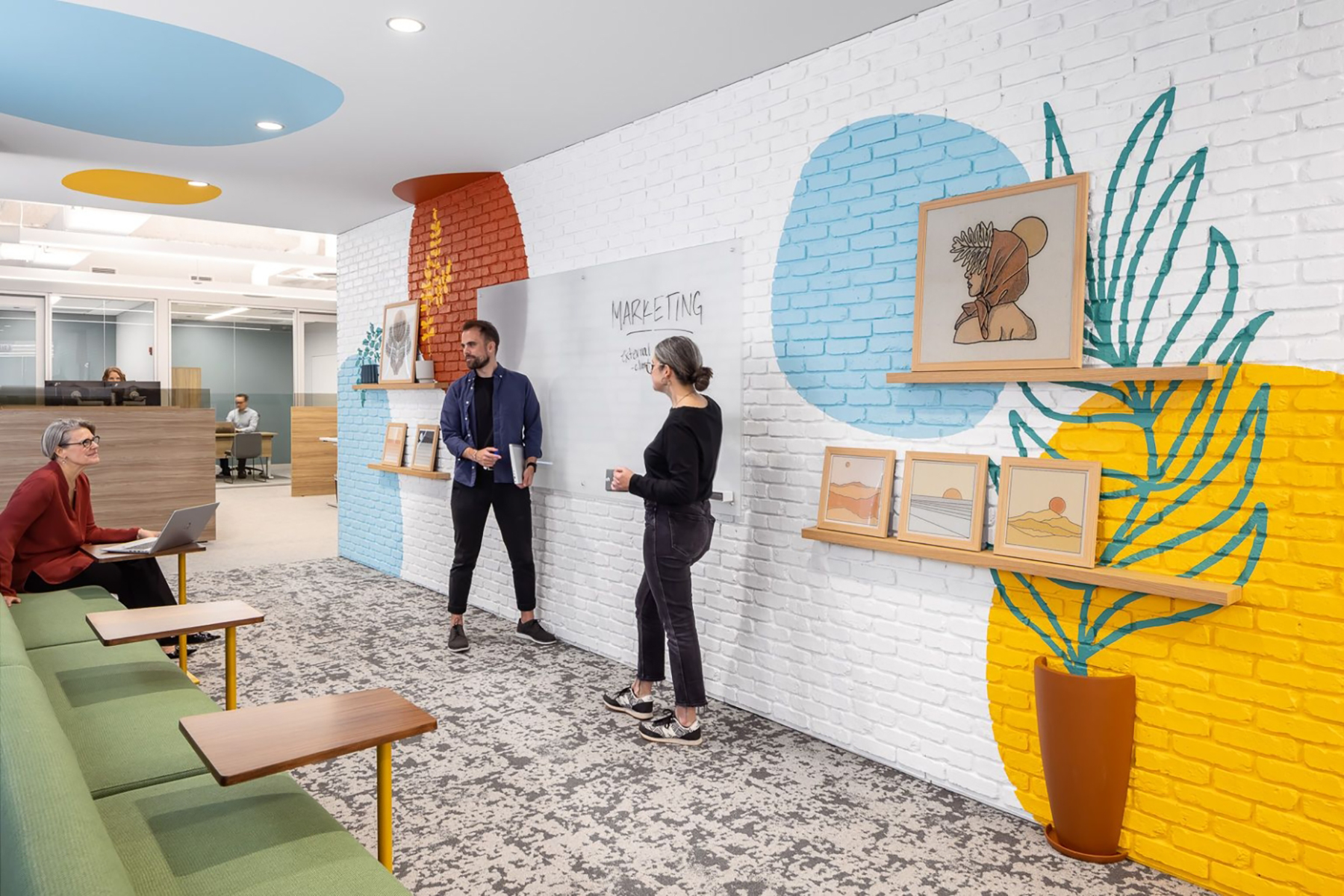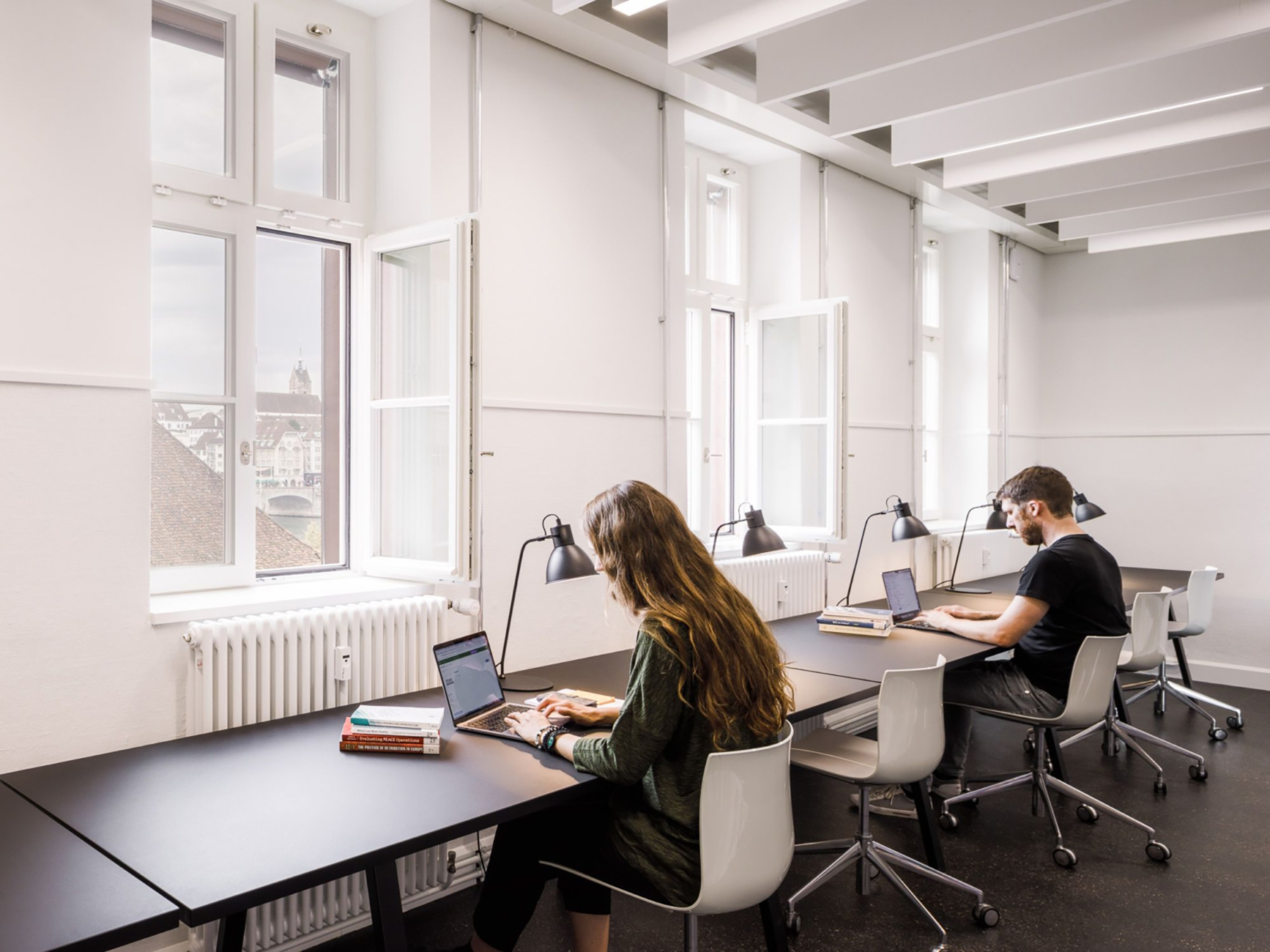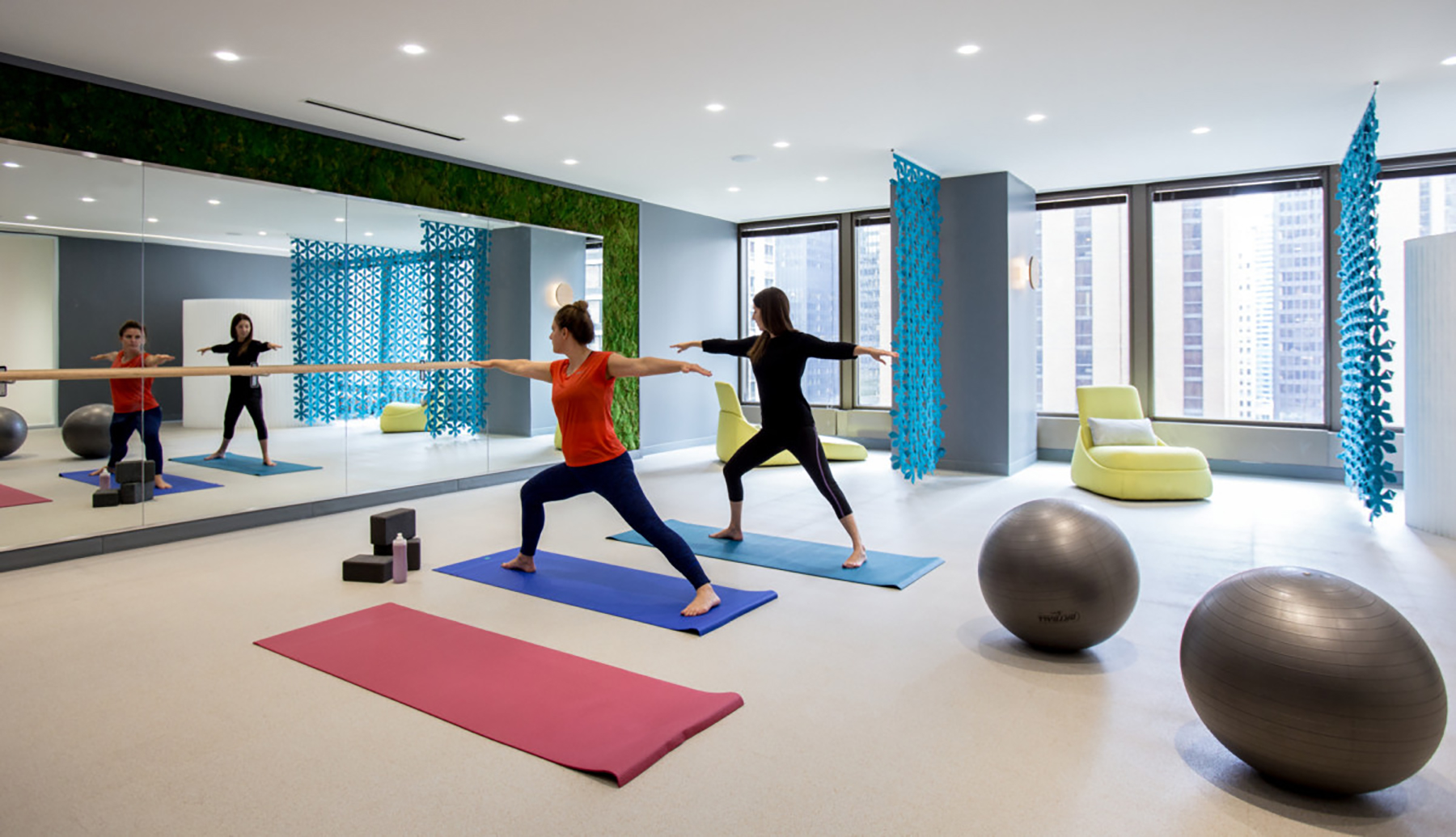A healthy work life
Being healthy is much more than the absence of diseases. It is having a state of completeness physical, mental and social well-being. We spend a third of our lives working and both working conditions and exposure to occupational risks can have a great impact on our Health.
According to WHO data, two million men and women die annually as a result of work accidents and work-related illnesses or injuries; 160 million new cases of illnesses that occur each year are work-related; and 8% of diseases derived from depression are currently attributed to health and safety risks at work.
What does workplace well-being entail?
El labor welfare It is a holistic concept that refers to the state of satisfaction that employees have in the exercise of their duties. It is the product of a pleasant work environment and the recognition of their work, which has an impact on a family and social well-being. Therefore, it is key to achieving a productive, motivated and committed team to the company.
A good work environment, motivation, the treatment received, economic and working conditions or the reconciliation of family and work life are factors that influence work well-being. Not only is it positive that the worker has a good level of work well-being, but the company benefits enormously from the collective satisfaction, which will have an impact on the reduction of absenteeism and stress, with more productive and motivated workers who increase their creativity and the development of their personal capabilities.
There are many factors that include work well-being, and there are multiple protocols of organizations, companies and foundations that are put into practice, totally or partially, in many workplaces. Here we summarize the most notable points.
Workplace well-being is focused from three perspectives which, together, make up an ideal state for the worker and the company:
- individual development
- Improvement of working conditions
- A healthy work environment.
Although we will dwell more closely on the third point, the healthy work environment, We want to develop the previous two, since they are equally important to achieve the global objectives.
individual development
Individual development concerns all those factors that help the worker to have a individual development within the company, with policies that actively incorporate the Health promotion, de emotional well y stress management. This involves caring for the worker as an individual with physical and psychological conditions in a controlled and professional manner. An example would be the promotion of healthy habits with specific programs against addictions (smoking, alcoholism, gambling disorders...), as well as ensuring a healthy and balanced diet, in canteens, restaurants or office vending machines.
This protocol also includes the detection, prevention and treatment of mental health problems, that are more difficult to detect and cause a large number of casualties due to non-treatment: Stress, depression due to lack of motivation or the “burning” are some of the causes that are directly associated with work.
Working conditions
The improvement of working conditions has to do with business policies aimed at community wellness of workers: teleworking, flexibility time or conciliation family are some of these measures that help the worker to better manage their work. In this strategy, the power of the community counts a lot, that is, cementing the group of workers so that they create a community that they develop. collaborative projects, both related to the work itself and to external actions (volunteering, non-profit entities, social entities...).
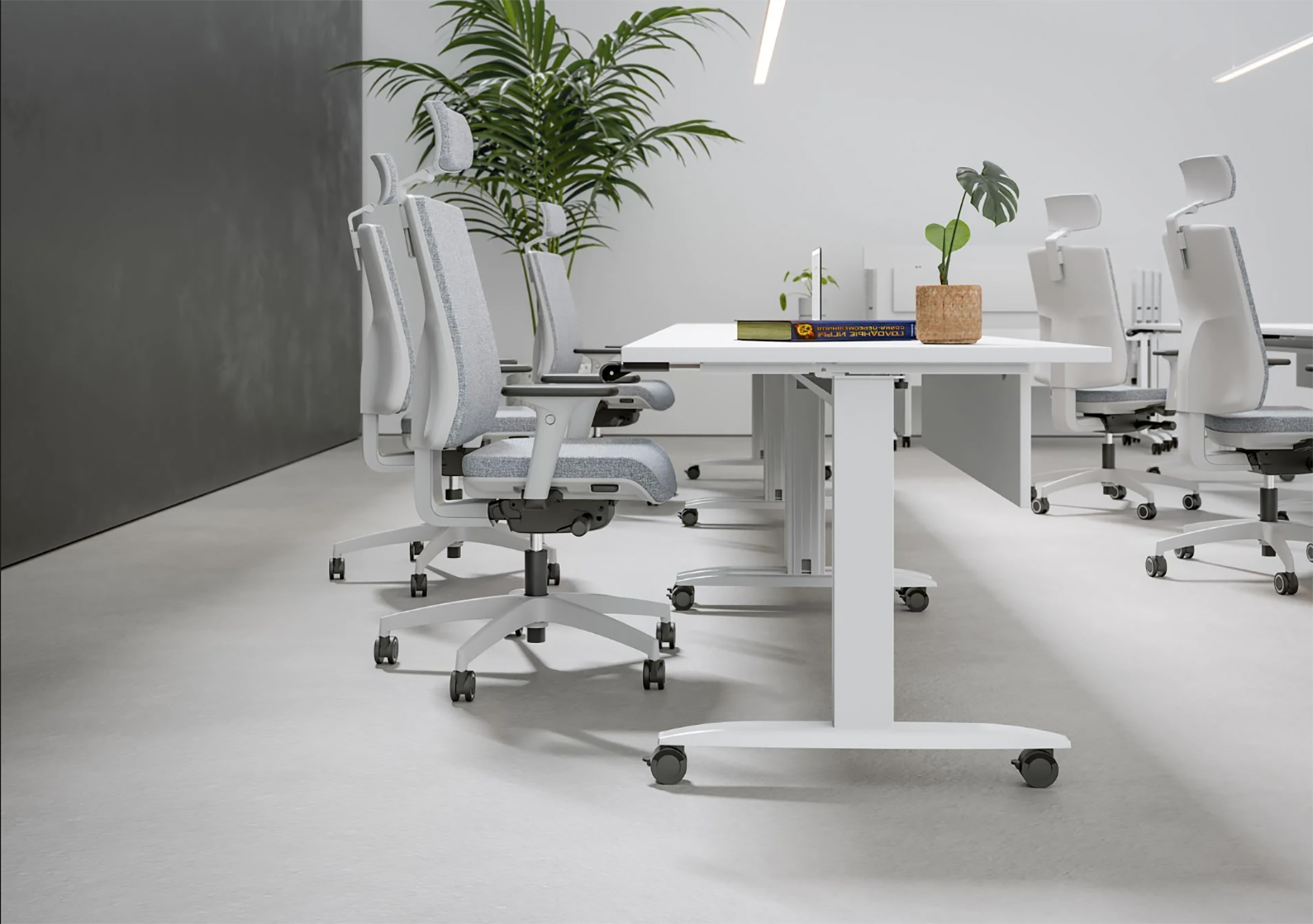
Healthy offices: Ergonomic and flexible furniture
It is well known that the physical work environment directly influences the physical and mental well-being of the worker, and special attention must be paid to those aspects that alter moods or produce chronic illnesses.
It has been proven that having a ergonomic furniture Adequate treatment reduces muscle pain (back, arms, neck, etc.) by up to 45%. It may be obvious, but the ergonomics of office furniture is the beginning of any action that seeks the worker well-being. Not only does it prevent muscle pain, but headaches, anxiety or stress. In addition, it favors the worker's concentration and productivity.
In addition to having ergonomic furniture, the protocol provides for guidelines to adapt correct postures or auxiliary elements, such as lecterns, leg supports, backrests, etc.
El flexible furniture, which allows workers to adapt to different needs and activities, also helps keep the body in different positions during the work day, promoting muscular and mental dynamism. Hence the hybrid spaces, so recurrent in modern offices, is a particularly beneficial model both for the development of the activity and for the physical well-being of the worker.
Natural and artificial lighting
La bad lighting It is one of the most problematic areas of the work environment. Although it is always preferable to work with natural light, it is often not possible, so the design of the office must have careful attention. lighting project. In fact, its importance is such that there are lighting designers specialized only in office lighting.
The low light quality generates shadows, glare or reflections uncomfortable, which can cause eye fatigue, tiredness, headaches and often force you to adopt incorrect postures. It also causes lack of attention, discouragement, depression, irritability and stress, which can be the cause of accidents, poor performance and sick leave.
You have to choose neutral colors for walls and furniture, preferably with matte and non-glossy finishes, to avoid lighting contrasts. The lighting must be uniform and with the possibility of graduate at different times of the day. Furthermore, lighting must be mixed, that is, use general lighting accompanied by focal or localized light. In offices, a level that ranges between 300-750 (lux) is recommended.
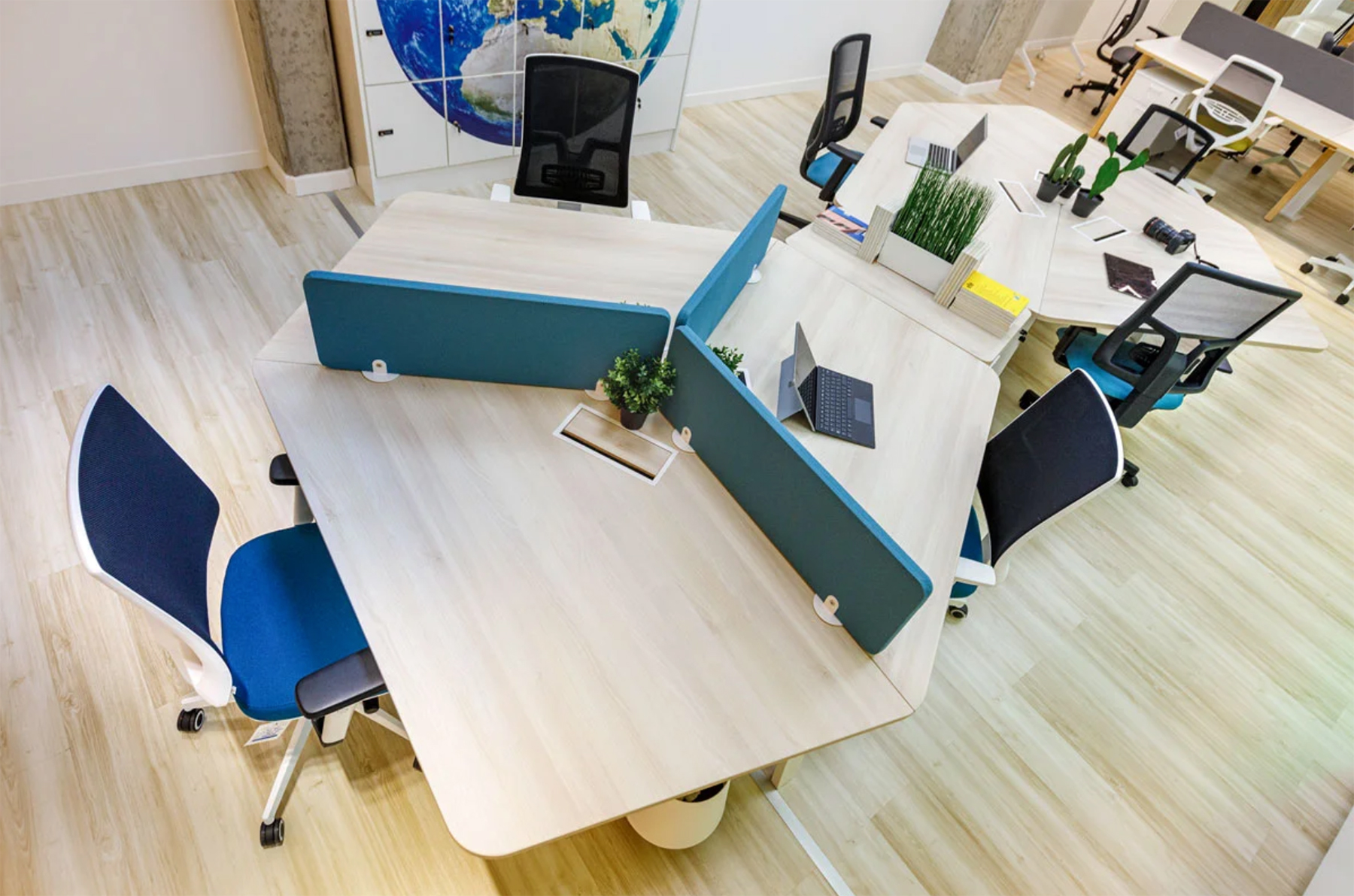
Acoustic isolation
One of the most important aspects in the well-being of work environments is ambient noise control, especially, in areas shared by groups of workers.
A high level of noise is extremely harmful to occupational health, it can cause stress, fatigue, depression, irritability or more serious pathologies related to stress. All of this affects people's productivity, since it makes concentration and communication difficult. People subjected to high levels of noise suffer from nervous fatigue that reduces their efficiency at work.
It is estimated that between 35 and 40 percent of workers exposed to noise levels above 90 decibels will suffer hearing loss after age 60. The average figures of European legislation mark the acceptable limit 65 dB during the day and 55 dB at night. In offices, the maximum sound level in operational areas must be 50dB; However, the average level generally rises to 70.
The danger of noise not only depends on its level in decibels but also on the daily time during which the person is subjected to it. In addition to the general insulation of the building, when designing the interior of a healthy office, it is necessary to analyze what level of privacy each workspace needs, which will be determined by the type of activity carried out there and the number of people. Hence the sound-absorbing materials for coverings, ceilings or space separation are becoming more important every day thanks to their effectiveness.
Thermal adaptation and air quality
In a healthy office, a comfortable thermal environment should be sought for the majority of people who work inside. The most indicated temperature ranges between 20 and 24ºC (20-22 in summer and 23-24 in winter). We must avoid a constant temperature, since our body needs temperature changes. The air must be fresh, with an adequate level of moisture and be free of suspended dust.
On the other hand, to maintain the indoor air quality must ensure adequate ventilation, in order that the concentrations of contaminants are maintained at levels that do not cause health problems for the occupants. There is a wide variety of contaminants in an office: chemicals or VOCs, bacteria, fungi, dust, etc., originating from different sources, such as heating systems, air conditioning, cleaning products, construction materials, etc. .
To counteract the effects of unhealthy air, it is necessary to create open spaces outside, with elements biophilic (plants, vines, green murals, etc.), which have a decontaminating effect and are capable of eliminating high percentages of toxic substances in a few hours. This connection with nature also promotes well-being, health and emotional comfort in a healthy office.
Physical activity during the work day
Last but not least, it is necessary to maintain some body activity during the work day. If your tasks require you to spend a lot of time sitting in front of a computer, you should force yourself to take short breaks every 20-30 minutes, to walk and do small stretches, but it will also be good to clear your mind and disconnect for a few minutes
The relationship between physical activity and productivity is amply demonstrated with factual data. For this reason, the concept of modern offices does not lack spaces of disconnection. These can be through board games (ping-pong, billiards, table football...), but also thanks to the installation of small Gyms with static machines (treadmills, bicycles, etc.), yoga roomsao pilates and even small climbing walls.
To create productive and healthy work environments It is necessary to take care of the physical and mental health of workers from a holistic perspective, that is, in its entirety, including socio-laboral relationships with bosses and colleagues.
In short, a healthy work environment is one in which workers and bosses collaborate in a process of continuous improvement to promote and protect the health, safety and well-being of workers and the sustainability of the work environment.
